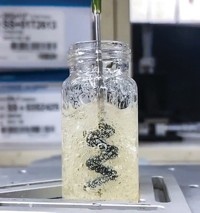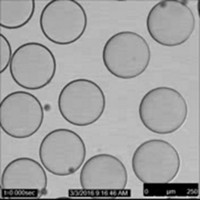Advertisement
Grab your lab coat. Let's get started
Welcome!
Welcome!
Create an account below to get 6 C&EN articles per month, receive newsletters and more - all free.
It seems this is your first time logging in online. Please enter the following information to continue.
As an ACS member you automatically get access to this site. All we need is few more details to create your reading experience.
Not you? Sign in with a different account.
Not you? Sign in with a different account.
ERROR 1
ERROR 1
ERROR 2
ERROR 2
ERROR 2
ERROR 2
ERROR 2
Password and Confirm password must match.
If you have an ACS member number, please enter it here so we can link this account to your membership. (optional)
ERROR 2
ACS values your privacy. By submitting your information, you are gaining access to C&EN and subscribing to our weekly newsletter. We use the information you provide to make your reading experience better, and we will never sell your data to third party members.
Microfluidics
Microfluidic Technique Forms Complex Patterns From Soft Materials
Colloid Chemistry: Simple method controllably produces variety of droplet geometries for future functional materials
by Mitch Jacoby
May 18, 2015
| A version of this story appeared in
Volume 93, Issue 20

Forming complex microscopic patterned materials typically requires complex techniques, such as lithography. But researchers in Poland have demonstrated that, if conditions are just right, a simple process can reproducibly yield a variety of intricately arranged, soft, colloidal materials.
The findings may lead to methods for preparing photonic crystals, bio-like membranes, and other three-dimensional functional materials.
In recent years, researchers have devised ways to use colloid chemistry to assemble tiny, rigid building blocks, such as semiconductor nanocrystals, into various microscopic patterns. But these assembly methods tend to guide the rigid particles to form a limited number of controlled, close-packed shapes or a wide variety of uncontrolled shapes.
Jan Guzowski and Piotr Garstecki of the Polish Academy of Sciences in Warsaw now show that by using soft building blocks instead of rigid ones, those limitations can be sidestepped (Phys. Rev. Lett. 2015, DOI: 10.1103/physrevlett.114.188302).
To form patterns, the team flowed a hydrocarbon solution through a microfluidic channel. They injected a water-based solution into the channel, causing the water-based solution to form micrometer-sized droplets. Then they directed the oil-water mixture into a chamber filled with a fluorocarbon solution, which trapped multiple water droplets inside oil droplets.
The water droplets inside the tiny liquid core-shell structures reproducibly assembled into shapes dictated by the microfluidic channel’s geometry and flow rate. The shapes also depended on the number of water droplets present in each oil droplet, which the team controlled by tilting the microfluidic device at varying angles during the fabrication process.
In addition to forming various 3-D flowerlike shapes, the droplets formed stable non-close-packed assemblies, including linear chains, an unexpected result that the team attributes to the droplets’ ability to compress together end to end.
Because of the way these soft droplets interact with one another and deform, they offer more assembly possibilities than conventional hard colloid particles, says Qian Chen, a soft-matter specialist at the University of Illinois, Urbana-Champaign. “Beyond the aesthetic richness, this work opens new perspectives in the study of double emulsions and potentially provides guidelines for designing tissuelike materials composed of similar soft building blocks.”





Join the conversation
Contact the reporter
Submit a Letter to the Editor for publication
Engage with us on Twitter